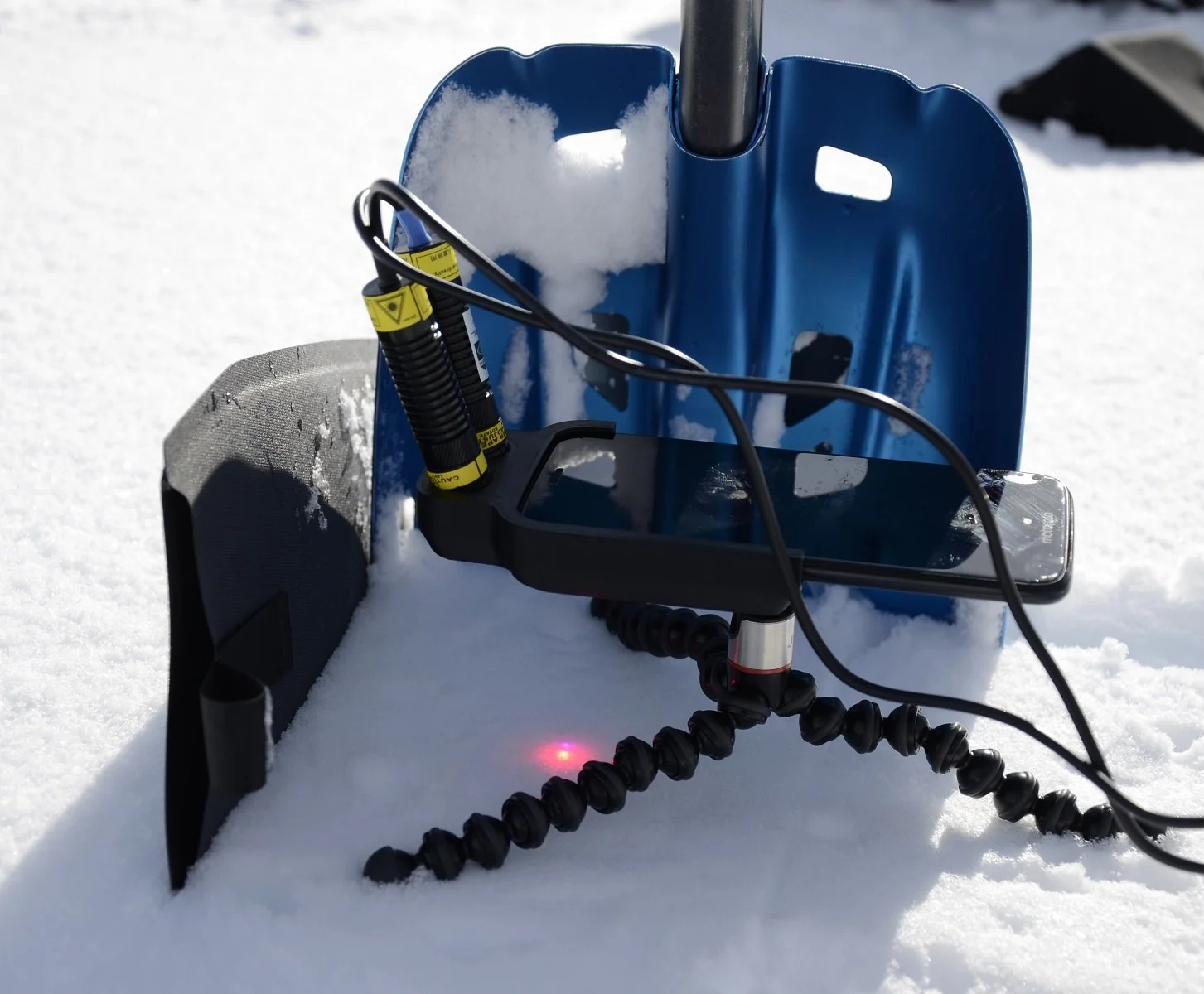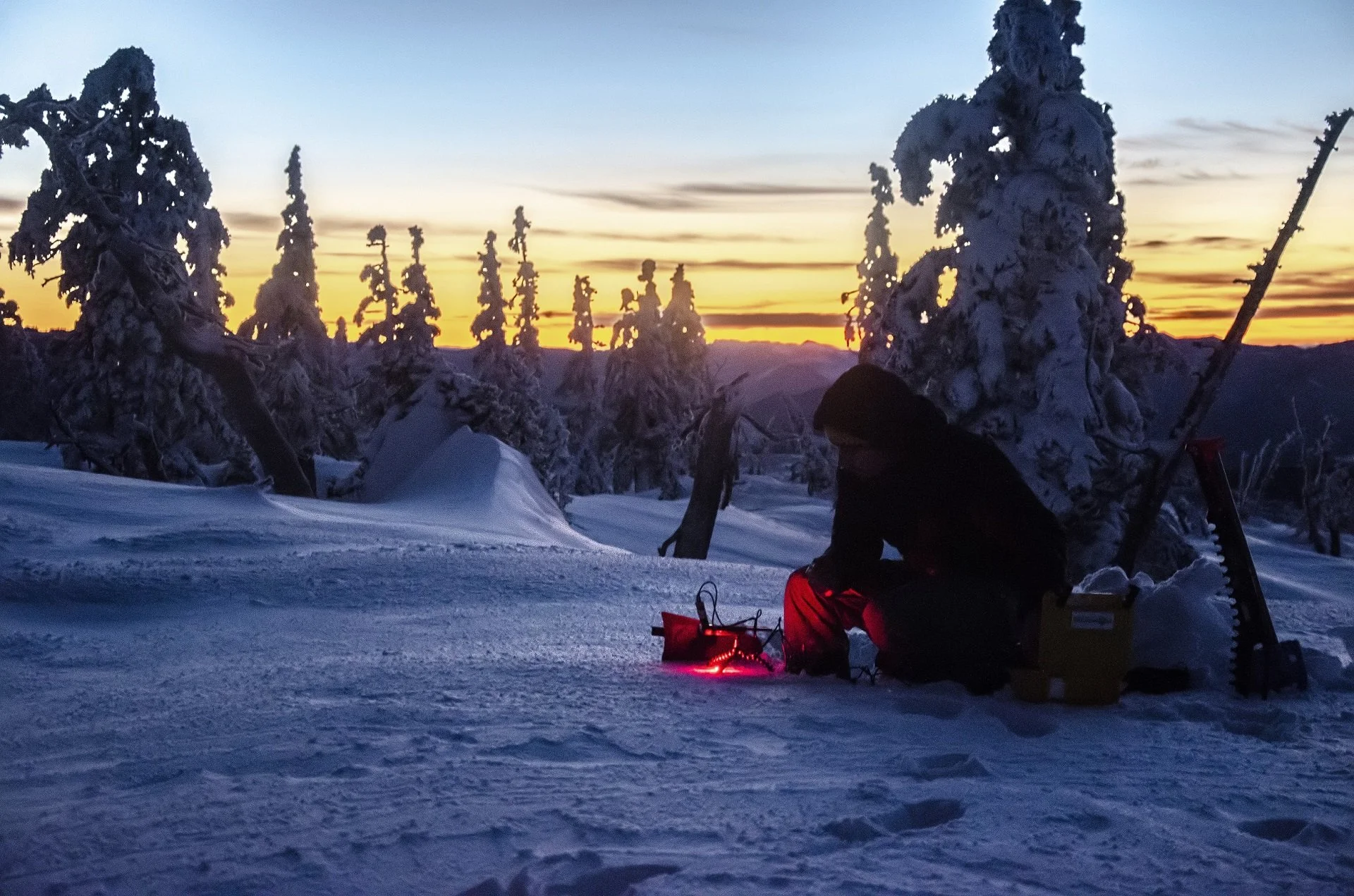Paper on low-cost laser reflectometer for snow science is out!
Last winter’s field work doing snow science paid off! The reflectometer used affordable diode laser modules and a smartphone camera to measure spatial scattering distributions when the lasers and camera are pointed at the snow surface. Measuring these distributions (see below) at different wavelengths where the snow optics are dominated by either ice or particulate absorption allows the user to quantify particulate concentrations in the snow. This data can in turn be used to feed snow melt models or to study the impact of wildfires on the snow.
The laser reflectometer uses a blue laser and a red laser and measures the “size” of the area from which light is scattered back from the snow. Ice strongly absorbs red light and is almost transparent for blue light, while it scatteres light in the same way for all colors. This way the two measurements give the difference in light absorptions at the two colors - that tells the user how contaminated the snow is.
To verify that the measurements are accurate, the results were used to calculate the albedo - that is the overall reflectivity of the snow, which can also be measured directly. The values are close, which is promising! As an additional verification, scattering samples with known optical properties were manufactured from a clear silicone compound with microscopic glass particles to mimic snow grains. The recipe was originally developed by a team of researchers based in Ireland, Italy and China (https://doi.org/10.1364/BOE.10.002090) for calibrating and testing biomedical imaging devices, and came in very handy to validate my own measurements here. The material is easy to work with and molds can be 3D-printed. In the future, I want to keep using the material as a “laboratory simulation” of snow and investigate the influence of dirt layers and new laser geometries.
An early version of the reflectometer and one of the scattering samples in the lab. In this case, the laser draws power directly from the phone’s USB-C port.
The device is very affordable and portable, making it the perfect tool for “backpack science” in remote areas as well as education and undergraduate research.
The article is published in Applied Optics: https://doi.org/10.1364/AO.457976


